Knowing more about Indian Food culture and the diversity it enjoys.
India is land of varied culture, language and cuisine. Indian cuisine is not one but combined taste of different food from all across the Indian subcontinent. In fact all the states and union territories have its own typical cuisine which is the flavorful and tasteful expression of the local ingredients, spices and cooking methods brought together as its heritage.
Each area has its own food specialties, not primarily at regional level, but also at provincial levels. Cuisine differences derive from various local cultures, geographical locations (whether a region is close to the sea, desert or the mountains), and economics. Indian cuisine is also seasonal, and highly dependent on fresh and local produce.
Different cuisines of India:
Let us travel this beautiful land of culture, traditions, rich heritage state by state and know about what the state has to offer in terms of food.
Andaman and Nicobar Islands
Seafood plays a major role in the cuisines of Andaman and Nicobar Islands, since they had very little contact with the outside world, raw fish and fruits were their staple diet for a long time. However, as many people from other regions of India came and settled here, different types of food and their methods to cook came with them, and this did cast an influence on the eating habits of the people of Andaman and Nicobar. Many cuisines of India can be found in the islands because the population is mainly derived from migrants from regions of India.
Andhra Pradesh
Cuisine of the southern state of Andhra Pradesh is referred to as Telugu cuisine. Rice is the staple food in the cuisine and is usually consumed with a variety of curries and lentil soups or broths. A large part of the population is vegetarian and they have innovated some excellent recipes, while people living in the coastal areas are known for their seafood. Food of Andhra Pradesh is known for its heavy use of spices and chillies. One of the most important part of the Andhra cuisine are the various pickles. Noteworthy pickles areAvakaya, a pickle made from green mango, and Gongura, a pickle made from the leaves of the gongura plant. Curd is also a part of the meal in the Andhra Pradesh as it helps to neutralize the spiciness of the food. Hyderabadi Biryani is one of the most famous dishes from Andhra Pradesh.
Arunachal Pradesh
The staple food of Arunachal Pradesh is rice, along with fish, meat and lots of green vegetables. Different varieties of rice are available. Lettuce is the most common and preferred vegetable of all, prepared by boiling it with ginger, coriander and green chillies. Boiled rice cakes wrapped in leaves is a famous snack. Thukpais traditional dish common among Monpatribe of Arunachal.
Assam
Assamese cuisine is the cuisine of Assam, a state in North-East India. It is a mixture of different indigenous styles with considerable regional variations and some external influences. It is characterized by very little use of spices but strong flavors due mainly to the use of endemic exotic herbs, fruits and vegetables that are fresh, dried or fermented. Fish is widely used, and so are birds like duck, pigeon etc. are very popular. Preparations are rarely elaborate-the practice of Bhuna, the gentle frying of spices before the addition of the main ingredients so common in Indian cooking, is absent in the cuisine of Assam. A traditional meal in Assam begins with a khar, a class of dishes named after the main ingredient, and ends with a tenga, a sour dish. These two dishes characterize a traditional meal in Assam. The food is usually served in bell metal utensils. The practice of chewing betel nut, paan, generally concludes the meal.
Bihar
The cuisine of Bihar has many similarities with North Indian cuisine i.e. the food culture in Hindi Belt, but it also has many similarities with Odia cuisine. Bihari society is not very rigid on vegetarianism, but people avoid eating non-vegetarian food daily. Bihari people typically eat boiled rice and daal with cooked vegetables during lunch, and roti with cooked vegetables during dinner. They do not usually eat roti and boiled rice together. Because of strong Hindu-Muslim heritage river fish, chicken and mutton (mainly goat mutton, since many people view lamb (sheep) meat as offensive) are the popular meats. Meat-based dishes are eaten mainly with boiled rice. Fish Curry is made using mustard paste which is similar to Odiaway of cooking fish. Dairy products are consumed frequently throughout the year, with common choices including yogurt (known asdahi), buttermilk (called mattha), butter, ghee (clarified butter), and lassi. It is highly seasonal, with watery foods such as watermelon and sherbet made of pulp of the wood-apple fruit (bel) being consumed mainly in the summer months, and dry foods and preparations made of sesame or poppy seeds mainly in the winter months. People generally eat roti soaked in milk. There is a custom of eating poha (flattened rice) with yoghurt and sugar. Bihar is famous for Sattu Parathas, which are parathas stuffed with fried chickpea flour, Chokha (spicy mashed potatoes), Fish curry, Litti, Bihari Kebab, and Postaa-danakaahalwaa.
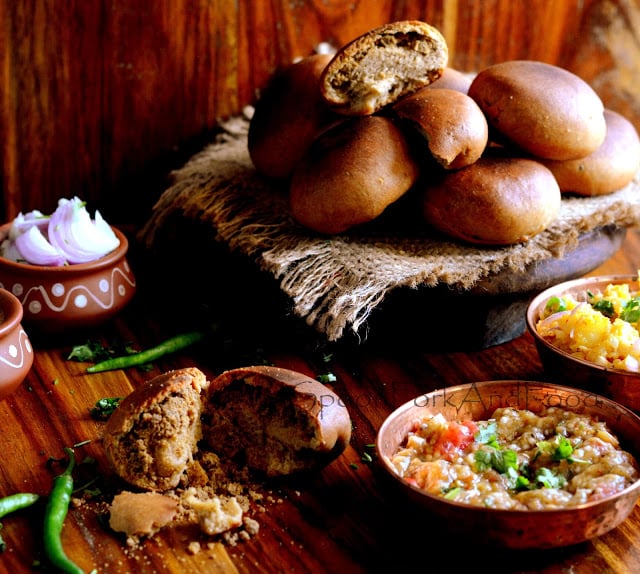
Another common dish is alubhajji (not to be confused with Bikaneri bhujia, also known as Rajasthani bhujia), made from potatoes cut like French-fries and cooked in mustard oil and mild spices, and eaten with roti or rice-daal. Apart from this, tangy raita made from lauki (winter melon) or unripened papaya, yoghurt, and spices (paste of green chilli, ginger, garlic and mustard) is popular in many parts of Bihar.
Chattisgarh
Chattisgarhhas many cuisines not found in the rest of India, while the staple diet, like much of the rest of India is rice. Many Chattisgarhi people consume liquor brewed from the Mahuwa flower. The tribal peoples of the Bastarregion of Chhattisgarh eat whatever is available, choosing food which would not be eaten by people of other states and regions. Red ant chutney is a favorite dish. Flying ants, mushrooms, squirrels, and rats are some of their choicest delicacies. As well as these unorthodox dishes, fish and pork constitute a large part of Chhatisgarhi cuisine. Pork forms a major item in their diet and almost every major ceremony starts with the sacrifice of a pig.
Daman and Diu
Daman and Diu is a union territory of India which, like Goa was a former colonial possession of Portugal. Consequently, both the native Gujarati Food and traditional Portuguese food is available. Because the neighboring state Gujarat has prohibited alcohol, dining and wining is the most popular pleasure in the territory, with almost all popular brands of foreign liquor being available due to the visits of people from the state to consume the alcohol.
Goa
Goan cuisine consists of regional foods popular in Goa, located along India’s west coast along the Arabian Sea. Seafood, coconut milk, rice and pasta are main ingredients of Goan delicacies. The area is located in a tropical climate, and spices and flavors are intense. Use of Kokum is another distinct feature. Goan food cannot be considered complete without fish, and the cuisine is mostly seafood based; the staple foods are rice and fish. Kingfish (vison) is the most common delicacy, others includepomfret, shark, tuna and mackarel. Among the shellfish are crabs, prawn, tiger prawn, lobster, squid and mussels.
The cuisine of Goa is influenced by its Hindu origins, four hundred years of Portuguese colonisation, and modern techniques. The state is frequented by tourists visiting its beaches and historic sites, so its food has an international aspect. Goan Saraswat Brahmin and Daivajna Brahmins are mostly fish eaters. Broadly they can be considered as facultative vegetarians, i.e. they eat fish and chicken on most of the days, while eating strict vegetarian (no meat, no-fish diet) food on some days, due to religious reasons. Fish and meat in their diet is considered as non-vegetarian. On the other hand other Brahmins belonging to Pancha Dravida category are strictly vegetarian. Their vegetarian cuisine is unique.
Gujarat
Gujarati cuisine is primarily vegetarian. The typical Gujarati thaliconsists of Roti (a flat bread made from wheat flour, and called Rotli in Gujarati), DaalorKadhi, rice, and sabzi/shaak (a dish made up of different combinations of vegetables and spices, which may be stir fried, spicy or sweet). Cuisine can vary widely in flavor and heat, depending on a given family’s tastes as well as the region of Gujarat they are from. North Gujarat, Kathiawad, Kachchh, and South Gujarat are the four major regions of Gujarat that all bring their own style to Gujarati food.
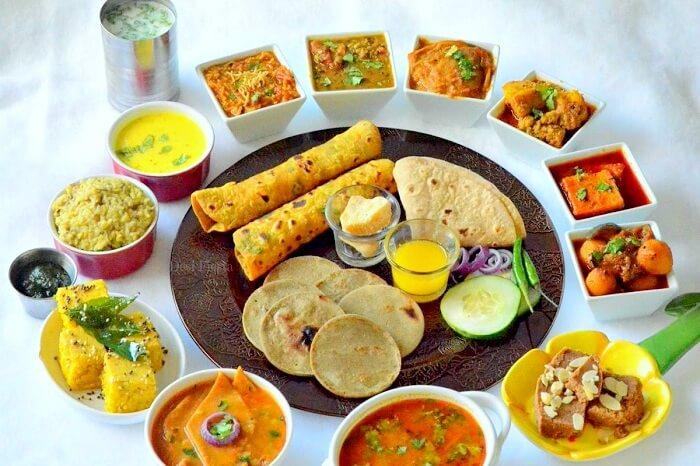
Many Gujarati dishes are distinctively sweet, salty, and spicy at the same time. The cuisine changes with the seasonal availability of vegetables. In mango season, for example, Keri no ras (fresh mango pulp) is often an integral part of the meal. The spices used also change depending on the season. Garam masala and its constituent spices are used less in summer. Regular fasting, with diets limited to milk and dried fruits, and nuts, are commonplace. Kachori, Jalebi, Undhiyu, Khakraa are some of the snacks famous in Gujarat.
Haryana
Food in Haryana is prepared using no modern materials, such as added artificial flavors and preservatives. Because Haryana is rich in cattle population, milk products are extremely common.
People of Haryana are fond of food preparations such as Kadhi Pakora, Besan Masala Roti, Bajra Aloo Roti, Churma, Kheer, Bathua Raita, Methi Gajar, Singri ki Sabzi and Tamatar Chutney. All through your way to Haryana, you will come across a number of Dhabas or roadside food stalls serving food.
Lassi and Sherbat are the two popular beverages of Haryana. On many roads in Haryana,it is common to come across a booze shop, since there are a number of liquor shops in this Indian state, due to the traffic of many truck drivers.
Himachal Pradesh
The day to day food of Himachalis is very similar to the rest of the north India. They too have lentil, broth, rice, vegetables and bread. As compared to other states in north India non-vegetarian cuisine is more preferred. Some of the specialties of Himachal include Pateer, Chouck, Bhagjery and chutney of Til.
Jammu & Kashmir
Kashmiri cuisine has evolved over hundreds of years. The first major influence was the food of the Kashmiri Hindus and Buddhists. The cuisine was then influenced by the cultures which arrived with the invasion of Kashmir by Timurfrom the region of modern Uzbekistan. Subsequently, it has been strongly influenced by the cuisines of Central Asian, Persia, and the North Indian plains. The most notable ingredient in Kashmir cuisine is mutton, of which there are over 30 varieties. Also to be noted are Balticurries, popular in the United Kingdom for their exotic tastes, that were originally brought by Kashmiri immigrants hailing from the Baltistan region of Pakistan-administered Kashmir.

Food of the Kashmiri Panditsis also very elaborate, and is an important part of the Pandits’ ethnic identity. The food usually uses yogurt, oils and spices as such turmeric, but avoids onion, garlic, tomatoes, and chicken. Unlike Kashmiri Muslim cuisine, it does not include many minced meat dishes. An equal emphasis is laid on vegetarian and non-vegetarian dishes, although there is a bias towards non-vegetarian dishes.
Jharkhand
Traditional Jharkhand cuisine is equally vegetarian as well as non-vegetarian. These traditional dishes are not available at the restaurants as they have not been commercialized. However on a visit to a tribal village or a tribal wedding in a remote area one can get a chance to taste such exotic food. All preparation except the pickles and festive ones are low on oil and spices.
Karnataka
The cuisine of Karnataka includes many vegetarian and non-vegetarian cuisines. The varieties reflect influences from the food habits of many regions and communities from the three neighbouringSouth Indian states, as well as the state of Maharashtra and Goa to its north. Some typical dishes includeBisibelebhath, Joladarotti, Chapati, Ragirotti, Akki roti, Saaru, Huli, Vangi bath, Khara Bath, Kesari Bath,Davanagere Benne Dosa, Ragimudde, andUppittu. The famous Masala Dosa traces its origin toUdupi cuisine. Plain and RavaIdli, Mysore masala dosaand Maddurvadaare popular in South Karnataka. Coorg district is famous for spicy varieties of pork curries while coastal Karnataka boasts of many tasty seafood specialities. Among sweets, Mysore pak, Dharwadpedha, chirotiare well known.Although the ingredients differ from one region to another, a typical Kannadiga Oota (Kannadiga meal) includes the following dishes in the order specified and is served on a banana leaf: Uppu(salt), Kosambari, Pickle, Palya, Gojju, Raita, Dessert (Yes, it is a tradition to start your meal with a dessert – Paaysa), Thovve, Chitranna, Rice and Ghee.
Kerala
Kerala cuisine is a blend of indigenous dishes and foreign dishes adapted to Kerala tastes. Coconuts grow in abundance in Kerala, and consequently, grated coconut and coconut milk are widely used in dishes and curries as a thickener and flavoring ingredient. Kerala’s long coastline, numerous rivers and backwater networks, and strong fishing industry have contributed to many sea- and river-food based dishes. Rice is grown in abundance, and could be said, along with Tapioca (manioc/cassava), to be the main starch ingredient used in Kerala food. Having been a major production area of spices for thousands of years, black pepper, cardamom, cloves, ginger, and cinnamon play a large part in its food. Most of Kerala’s Hindus eat fish except the Brahmin community and because Kerala has large minorities of Muslims and Christians that are predominantly non-vegetarians, Kerala cuisine has a multitude of both vegetarian and dishes prepared using fish, poultry and meat. Rice and fish along with some vegetables is the staple diet in most Kerala households. Kerala also has a variety of breakfast dishes likeidli, dosa, appam, idiyappam, puttu, andpathiri.
Lakshadweep
The culinary influence of Kerala is quite evident in the cuisines of Lakshadweep. Since the island has a close proximity with Kerala, hence the cuisines reflect the taste of the inhabitants of that place. The local food of Lakshadweep primarily comprises coconut and sea fish. The people of the island have a great inclination towards the coconut water as it is the most abundant aerated drink of the place. Almost all the dishes have a touch of coconut since it is an integral ingredient of Lakshadweep cuisines.
Madhya Pradesh
The cuisine in Madhya Pradesh varies from region to region, with the north and west of the state being mainly based around wheat and meat, and the wetter south and east being dominated by rice and fish. Gwalior and Indore abound in milk and milk-based preparations. Bhopal is known for meat and fish dishes, such as rogan josh, korma, keema, biryani pilaf and kababs such as shami and seekh.
One other popular dish in the region is the bafla (wheat cakes) dunked in rich ghee which are eaten with daal (a pungent lentil broth). It is followed by sweet ladoos. Another popular dish in Malwa region (central M.P) is poha (flattened rice), it is mostly a breakfast item served with Jalebi.
Indore, Ujjain and Ratlam are world famous for their savory snacks that are made from chick-pea flour. The city restaurants also serve tasty chaats (snacks), kachoris and samosas.
In summers, the meals tend to end with fruits such as mangoes (dusseharis), melons and watermelons, custard apples, bananas, papayas and guavas.
The beverages in the region include chaas(buttermilk), sugarcane juice, a beer ora fine rum which is produced from the cane. There also is the local liquor which is distilled from the flowers of the mahua tree called sulfi and date palm toddy.
Maharashtra
Maharashtrian cuisine covers a range from being mild to very spicy dishes.Bajra, Wheat, rice, jowar, vegetables, lentils and fruit form important components of Maharashtrian diet. Popular dishes includepuranpoli, ukdiche,Modakandbatatawada. The staple dishes of Maharashtrian cuisine are based onBajri, jowarand tandul.
The cuisine of Maharashtra has its own distinctive flavors and tastes. It can be divided into two major sections–the coastal and the interior. A part of Maharashtra, which lies on the coast of the Arabian Sea, is loosely called the Konkan and boasts of its own Konkani cuisine, which is a homogeneous combination of Malvani, Gaud,Saraswat Brahmin and Goan cuisines. Besides the coastal cuisine, the interior of Maharashtra—the Vidarbha area, has its own distinctive cuisine known as the Varadi cuisine. As in many states of India, rice is the staple food grain in Maharashtra.
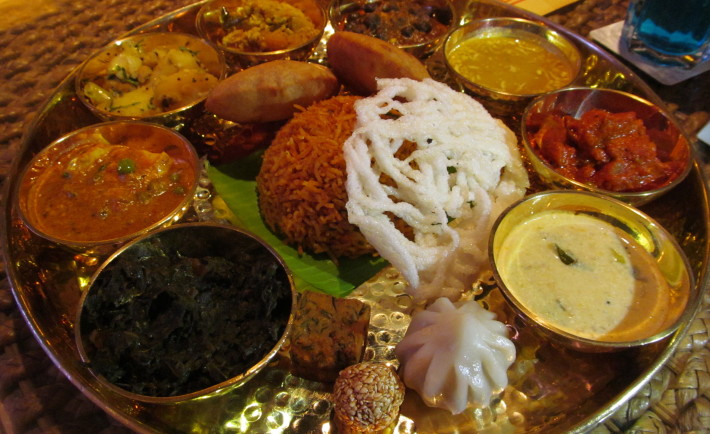
Like the other coastal states, there is an enormous variety of vegetables in the regular diet and lots of fish and coconuts are used. Grated coconuts spice many kinds of dishes, but coconut oil is not very widely used as a cooking medium. Peanuts and cashew nuts are widely used in vegetables and peanut oil is the main cooking medium. Another feature is the use of kokum, a deep purple berry that has a pleasing sweet and sour taste. Kokum, most commonly used in an appetizer-digestive called the sol kadhi, is served chilled. During summer another drink called panna made from bioled raw mango is consumed. Rest of the Maharashtra apart from Konkan, uses ground nuts, jaggary, wheat, jowar and bajra extensively.Maharashtrian meal consists of rice and bread both along with ‘varan’/’aamtee’ – a type of lentils and spiced veggies. Maharashtrian dishes for ‘Upwas’ have a special mention as most of them are favourites for life time e.g. sabudanakhichadi.
Manipur
Manipuri cuisine is simple, organic and healthy. Dishes are typically spicy foods that use chili pepper rather than Garam masala. The staple diet of Manipur consists of rice, leafy vegetables, and fish. Manipuris typically raise vegetables in a kitchen garden and rear fish in small ponds around their house. The Umarok is a very popular chili that is used in the cuisine. It is called in different names in the other north eastern states of India, like king chili, nagajolokia, ghost chili etc.
Meghalaya
Meghalayan cuisine is the local cuisine of one of the Indian States.Meghalaya, also one of the seven sisters and home of three Mongoloid tribes, has a unique cuisine of its own, different from other states in the north east of India. The staple food of the people is rice with spicy meat and fish preparations. They rear goats, pigs, fowl, ducks and cows and relish their meat. The popular dishes areJadoh, Ki Kpu, Tung-toh, and pickled bamboo shoots. Like the other tribes in the north-east, they ferment rice beer, which is consumed in religious rites and at major ceremonies and celebrations.
Mizoram
The cuisine of Mizoramis very different from most Indian cuisines, mainly sharing similarities with other cuisines from the North-East of India. Mizo cuisine is a blend of Chinese and north Indian cuisines, and Mizoram cuisine offers mainly non-vegetarian delicacies. Dishes may be served on fresh green banana leaves. Meals are usually less spicy and plain in taste, retaining the nutritive value of the food. A popular dish is Bai, eaten with rice,which can be made from boiling spinach with pork and bamboo shoot. Another common dish is Sawchair made of rice cooked with pork or chicken.
Nagaland
Naga cuisine, of the Naga people is known for exotic meats cooked with simple and flavorful ingredients like the lethal bhootojolokia or ghost chili, fermented bamboo shoots and soya beans. The Nagamese use oil minimally, they prefer to ferment, dry and smoke their meats and fishes so their food is healthy and light. Traditional homes have external kitchens like smoke houses.
Orissa
Oriya cuisine is rich and varied, while relying heavily on local ingredients. The flavors are usually subtle and delicately spiced, quite unlike the fiery curries typically associated with Indian cuisine. Fish and other seafood such as crab and shrimp are very popular. Chicken and mutton are also consumed.PaanchPhodon, a mix of cumin, mustard, fennel, fenugreek and kalonji (nigella) is widely used for tempering vegetables and dals, while garam masala (curry powder) and haldi (turmeric) are commonly used for non-vegetarian curries.Pakhala, a dish made of rice, water, and yoghurt, that is fermented overnight, is very popular in summer, particularly in the rural areas. Oriyas are very fond of sweets and no Oriya repast is considered complete without some dessert at the end. Vegeterian foods also include foods prepared without onion and garlic as in temple prasadam and bramhin cuisine.
Puducherry
The union territory of Pondicherry in the country of India was a French settlement for a long time. The French way of life has left a deep impact on the lifestyle of the people in the union territory of Pondicherry, and French cuisine has become a large influence in cuisine in the territory. The French and the Indo style have given birth to an innovative taste. The influence of the neighboring areas like Tamil Nadu, Andhra Pradesh and Kerala is also visible.
Some of the hot favorite cookery items in Pondicherry are Coconut Curry, Tandoori Potato, Soya Dosa, Podanlangkai, Assad, Curried Vegetables, Stuffed Cabbage, Baked Beans.
Punjab
Punjabi cuisine can be non-vegetarian or completely vegetarian. One of the main features of Punjabi cuisine is its diverse range of dishes. Home cooked and restaurant Punjabi cuisine can vary significantly, with restaurant style using large amounts of ghee, with liberal amounts of butter and cream with home cooked concentrating on mainly upon preparations with whole wheat, rice and other ingredients flavored with masalas.
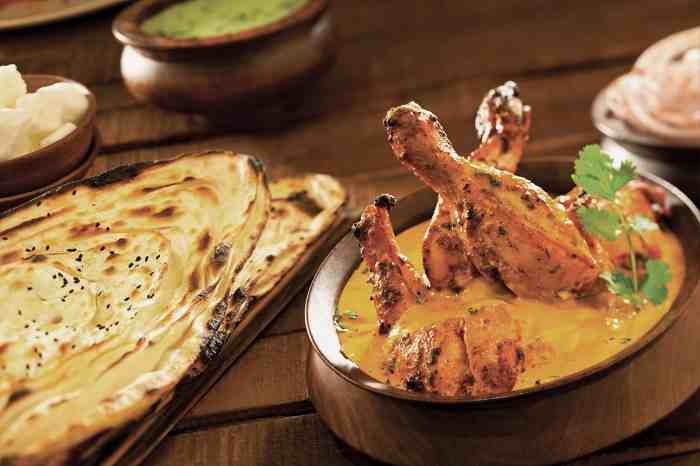
Within the area itself, there are different preferences. People in the area of Amritsar prefer stuffed parathasand dairy products, of which the area is well-known for. There are certain dishes which are exclusive to Punjab, such as Ma Di Dal and Sarson Dasaag. The food is tailor-made for the Punjabi lifestyle in which most of the rural folk burn up a lot of calories while working in the fields. The main masala in a Punjabi dish consists of onion, garlic and ginger. Tandoori food is a Punjabi speciality especially for non-vegetarian dishes. Many of the most popular elements of Anglo-Indian cuisine– such as Tandoor, Naan, Pakoras and vegetable dishes with paneer – derive from the Punjab.
Rajasthan
Rajasthani cooking was influenced by the availability of ingredients in this arid region. In Rajasthan water is at a premium, and hence the food is generally cooked in milk or ghee, making it quite rich. On the other hand, Besan or gram flour is a mainstay of Marwari food mainly because of the scarcity of vegetables in this arid land.
There is a distinctness in the Rajasthani cuisine which comes from a tradition that is old and tranquil, and from a culture that has churned the best from its neighboring states of Gujarat, Haryana and Punjab. Food that could last for several days and could be eaten without heating was preferred. Scarcity of water and fresh green vegetables have all had their effect on the cooking. Major dishes of a Rajasthani platter includesDaal-Baati, Tarfini, Raabdi, Bail-Gatte, Panchkoota, Chaavadi, Laapsi, KadhiandBoondi, and snacks likeBikaneribhujia, Mirchivada, MawaKachoriandPyaajKachori.
Sikkim
Sikkim has its own unique dietary culture with specific cuisine and food recipes. In the Sikkim Himalayan traditional foods are an integral part of the dietary culture of the various ethnic groups of people consisting of theNepalese ,BhutiasandLepchas. Rice is the staple food. Meat and dairy products are also consumed depending on availability. Besides these, various traditional fermented foods and beverages, which constitute of about 20 per cent of the basic diet for long centuries are prepared and consumed. The dietary-culture of this region is mostly reflected in the pattern of food production. Depending on the altitudinal variation, finger millet, wheat, buckwheat, barley, vegetable, potato, soybeans, etc. are grown. Some of the common traditional cuisine with their food recipes has been presented for introduction of dietary culture of the Sikkim Himalayas, as well as for product diversification.
Sindh
Sindhi cuisine refers to the native cuisine of the Sindhi people from the Sindh region, Pakistan. While Sindh is not present in modern India, Sindhi food is eaten in India, where a sizeable number of Hindu Sindhi people migrated following the partition of India, especially in Sindhi enclaves such as Ulhasnagar and Gandhidham. The daily food in most Sindhi households consists of Wheat-based flat-bread (Phulka) and rice accompanied by two dishes, one gravyand one dry.
Tamil Nadu
Tamil food is characterized by the use of rice, legumes and lentils, its distinct aroma and flavor achieved by the blending of spices including curry leaves, tamarind, coriander, ginger, garlic, chili, pepper, cinnamon, cloves, cardamom, cumin, nutmeg, coconut and rosewater. The word “curry” is derived from the Tamil word ‘kari’ which means “an additive to the main course or a side dish” rice and legumes play an important role in Tamil cuisine. Lentils are also consumed extensively, either accompanying rice preparations, or in the form of independent dishes. Vegetables and dairy products are essential accompaniments. Tamil Nadu is famous for its spicy non vegetarian dishes (just like Andhra Pradesh). The southern regions in Tamil Nadu, namely; Madurai,Kaaraikudi or Chettinaaduare famous for their spicy non vegetarian dishes.
Telangana
Telangana cuisine is the food unique to newly formed Telangana state. Lying in the deccan region of India, the cuisine emphasizes on the extensive use of millet roti based dishes such as jonnarotte (sorghum), sajjarotte (penisetum) or sarva/uppudipindi (broken rice). Jowar and Bajra features very prominently in the cuisine. Due to its proximity to the states of Maharashtra, Karnataka, Andhra Pradesh and Chattisgarh, the cuisine is highly influenced with the cuisines of these states too.
In Telangana, a gravy or curry is called Koora and Pulusu (sour) which is based on tamarind. Telanganapalakoora is a spinach dish cooked with lentils eaten with steamed rice or roti. Peanuts or cashew nuts are added as garnishing in the recipes. Boti (derived from mutton), potlakayapulusu (snake gourd) stew are staples of this cuisine. Sakinalu (fritters) is a popular snack made of rice flour during festivals or special occasions.
Fresh vegetables like tomatoes, brinjal, bitter gourd, pulses, snake gourd form main components of vegetarian dishes. The dishes based on goat or lamb are preferred over chicken. In coastal regions even the fresh water fish is used called korramatta. Telangana cooking makes a good use of tamarind, red chilies, and asafeotida.
Tripura
The Tripuri (Tipra or Tipperah) people are the original inhabitants of the state of Tripura in North east of India. The indigenous Tripuripeople comprises the communities ofTipra, Reang, Jamatia, Noatia, Uchoi and others.The Tripuri people have their own culture and cuisine. The Tripuris are non-vegetarian, though there is a minority modern vaishnavite Hindu vegetarian following. The major ingredient of Tripuris cuisine for non-vegetarian food includes pork, chicken, mutton, turtle, fish, prawn, crabs and frogs.
Uttar Pradesh
The Uttar Pradeshi cuisine consists of both vegetarian and non-vegetarian dishes but a vast majority of the state enjoys sober vegetarian meals with dal, roti, sabzi and rice constituting the essentials of daily food habits. Poorisand kachorisare relished on special occasions. Uttar Pradesh has also been greatly influenced by Mughal (Mughlai cuisine) cooking techniques which is very popular worldwide. The samosa andpakora, among the most popular snacks in all of India, are also originally from Uttar Pradesh. Awadhi is a type of West-Central Uttar Pradeshi cuisine found in the state’s Awadh Region.
Uttarakhand
The food from Uttrakhand is known to be wholesome to suit the high-energy necessities of the mountainous and wintry region. It is traditionally cooked over wood fire. The cuisine mainly consists of food from two different sub regions GarhwalandKumaon, though the basic ingredients of both Garhwali and Kumaonicuisine are the same, there are some basic differences that tell apart the two. The distinctive trait of the Kumauni cuisine is the tightfisted use of especially milk and milk-based products as cows from hilly areas do not yield high-quality or amount of milk. The similarity between both of them is the liberal use of Ghee and charcoal cooking. Both Garhwalis and Kumaunis are fond of lentil or pulses and ‘Bhaatt’ or rice. To combat the extreme winters and possible exhausting of food, they also use Badi (sun-dried Urad Dal balls) and Mangodi (sun-dried Moong Dal balls) as substitute for vegetables at times. Main dishes from Uttarakhand include Chainsoo, Kafuli, Jholi, Thechwani, Baadi, etc.
The dishes prepared by the people of Uttarakhand are similar to Uttar Pradesh. They eat rice, pulses, chapatis, vegetable. Tomatoes, onions and spices are used to make the food delicious.
West Bengal
Bengali cuisine is a style of food preparation originating in the eastern India which includes states of Tripura, Barak valley of Assam and West Bengal. With an emphasis on fish and lentils served with rice as a staple diet, Bengali cuisine is known for its subtle flavours, its confectioneries and desserts, and has perhaps the only multi-course tradition from India that is analogous with French and Italian cuisine in structure. The nature and variety of dishes found in Bengali cooking are unique even in India. Fish cookery is one of its better-known features and distinguishes it from the cooking of the landlocked regions. Bengal’s many rivers, ponds and lakes teem with many kinds of freshwater fish that closely resemble catfish, bass, shad, or mullet. Bengalis prepare fish in innumerable ways – steamed or braised, or stewed with greens or other vegetables and with sauces that are mustard-based or gravies thickened with poppy seed paste.
Overall, India is an experience in itself. You do not and cannot know India by just visiting a few cities or some areas. Each state of India is a unique part of India that cannot be found anywhere else. India has 29 States and 7 Federal Territories, and each of these regions have their own unique language and different people. From the valleys of Kashmir to the foothills of Kerala to the Islands of Maldives, India shares a unique history and culture – all of which plays an important role in its dietary customs and cuisines. Thus India is an experience you just cannot forget and the food you will crave – you just have to find which type of “Indian food” you like…







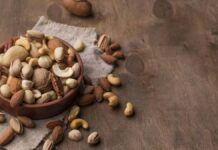




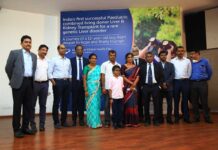
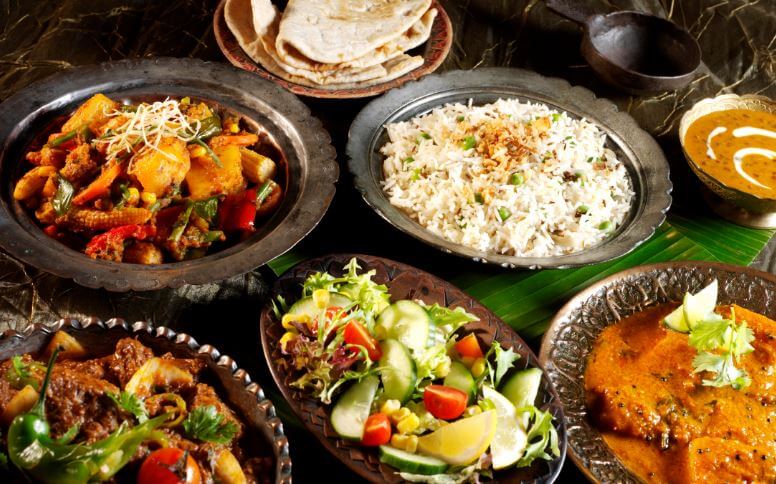







Goa is never famous for pasta… I am goan